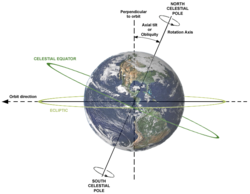Simulated evolution of Earth's day length over time
Autor:
Přisuzování:
Obrázek je označen jako „Vyžadováno uvedení zdroje“ (Attribution Required), ale nebyly uvedeny žádné informace o přiřazení. Při použití šablony MediaWiki pro licence CC-BY byl pravděpodobně parametr atribuce vynechán. Autoři zde mohou najít příklad pro správné použití šablon.
Shortlink:
Zdroj:
Formát:
4000 x 2250 Pixel (1079122 Bytes)
Popis:
This plot depicts the simulated evolution of Earth's day length over time for varying choices of lunar torque τ0 (shown in blue and green) and temperature values (red) over the lifetime of the Earth. Resonant-stabilizing effects are present from 600 Ma. to 1800-2600 Ma., depending on the choice of lunar torque. Note that atmospheric thermal noise does not influence the day length except very near resonance, and that the resonant effect remains unbroken through this noise until two successive simulated snowball events at the end of the Precambrian 720 Ma and 640 Ma, corresponding to recent estimates of the Sturtian and Marinoan glaciations [Rooney et al., 2014]. Recapture events can be seen at 870 Ma following the “Kaigas glaciation” and, for some values of τ0, following a Paleoproterozoic glaciation detailed in Kirschvink et al. [2000]. Approximate empirical day length data from a compilation in Williams [2000] are overlaid in black (error bars included where present) and resemble the simulated results, though the reader should not take this data to be too reliable, particularly the data points prior to 600 Ma.
Licence:
Credit:
Vlastní dílo
Relevantní obrázky

(c) I, Dennis Nilsson, CC BY 3.0

Relevantní články
Rotace ZeměRotace Země je pohyb planety Země kolem její vlastní osy, tedy kolem pomyslné přímky spojující severní a jižní zeměpisný pól. Země rotuje směrem k východu, z pohledu Polárky jde o pohyb proti směru hodinových ručiček. Jedna otočka trvá 23 hodin, 56 minut a 4 sekundy. .. pokračovat ve čtení
